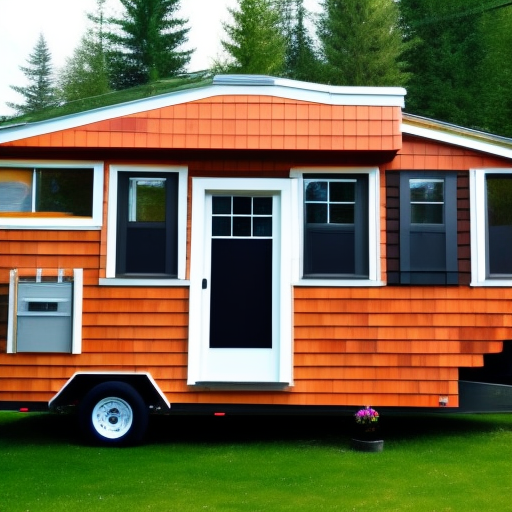The tiny house movement is gaining in popularity across the globe, and it’s not hard to see why. Tiny houses offer an affordable, eco-friendly, and incredibly cozy lifestyle. But when it comes to tiny houses, first you have to ask: What size is a tiny house in Canada? This article will explore the details of tiny home sizes in Canada, so read on to find out all you need to know!
Definition of Tiny House
When it comes to tiny houses, size definitely matters. But just how small is tiny? Well, to be considered a true tiny house, it must be under 500 square feet! That’s roughly the size of a two-car garage. Crazy, right?
But don’t let the small size fool you. Tiny houses are chock-full of ingenious designs to make the most of every inch of space. From hidden storage underneath the stairs to convertible furniture, these tiny homes are like a puzzle waiting to be solved. And with the rising cost of housing and the trend towards minimalism, tiny houses are becoming more and more popular across Canada. So, if you’re ready to downsize and live the tiny life, grab your tool belt and get building!
Size Guidelines for a Tiny House in Canada
When it comes to tiny houses in Canada, there are no set size standards. However, most tiny homes in Canada range from 100 to 500 square feet. As you can see, the size is relatively small, but some people may opt for even smaller homes at around 80 square feet!
That being said, size guidelines for tiny homes in Canada depend on where you are building it. For instance, some provinces such as Quebec have specific zoning laws that dictate the minimum square footage required for a home. Before you get started on building your tiny home, you should research the zoning laws in your area to ensure that you are adhering to the guidelines.
Advantages of Living in a Tiny House
Living in a tiny house may seem daunting at first, but there are actually many advantages to downsizing your living space. Here are just a few:
- Less Clutter: With limited space, you’ll be forced to make some tough decisions about what to keep and what to get rid of. This can help eliminate clutter and create a more minimalist lifestyle.
- Lower Costs: A smaller home means lower expenses. You’ll save money on utilities, maintenance, and property taxes. Plus, you can use the money you save to pay off debt or put towards other financial goals.
- Environmental Benefits: Living in a tiny house typically means a smaller environmental footprint. You’ll use less energy to heat and cool your home, and you’ll produce fewer emissions.
One real-life example of the advantages of tiny living is the story of a couple who built their own tiny house for just $12,000. By downsizing to a smaller space, they were able to save money and focus on traveling and pursuing other passions. Another couple was able to pay off $125,000 in debt by living in a tiny house and significantly reducing their expenses.
Overall, there are many benefits to living in a tiny house. It may not be for everyone, but for those looking to simplify their lives, save money, and reduce their environmental impact, tiny living may be the perfect solution.
Drawbacks of a Tiny House in Canada
Living in a tiny house may sound like a dream come true: cute, cozy, and cost-efficient. However, there are some drawbacks to consider before you downsize to a tiny house in Canada. From location issues to a limited space, here are some ways tiny house living might not be as glamorous as it sounds:
First and foremost, tiny houses are not always permitted in every city or town. Depending on where you live, there may be zoning laws or building codes that restrict the size, location, or structure of a home. For example, in Vancouver, it is illegal to live in a tiny house on wheels, while in other provinces, there may be restrictions on plumbing or electrical systems. Before investing in a tiny home, make sure to do your research and check out local bylaws to avoid any unexpected legal issues.
Moreover, although downsizing can help you save money in the long run, there are some initial costs associated with a tiny home that can add up quickly. For example, because tiny homes are often custom-built to maximize space, materials can be more expensive than in a traditional home. Furthermore, if you’re moving from a larger home to a tiny one, you’ll need to get rid of many of your possessions, which can be a challenging and time-consuming process. Finally, be prepared for the reality that your living space will likely feel cramped, and you may need to get creative with storage and organization to maximize your limited area. So, before going tiny, make sure to weigh the cost and space limitations against the perceived benefits. So, whether you are looking to downsize from a large home, or if you’re just entering the housing market for the first time, a tiny house in Canada can provide an affordable and comfortable living solution. Remember to take into account your housing needs and expectations when making your decision, so you can ensure you find the right size tiny home for you or your family.